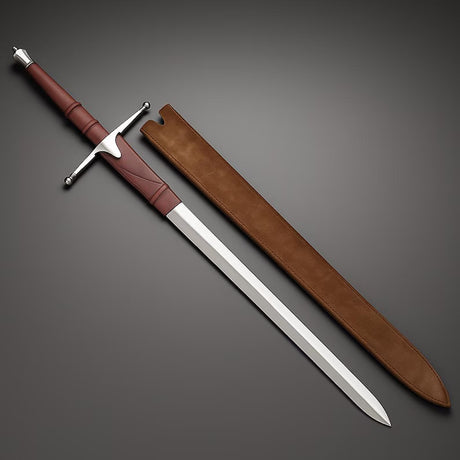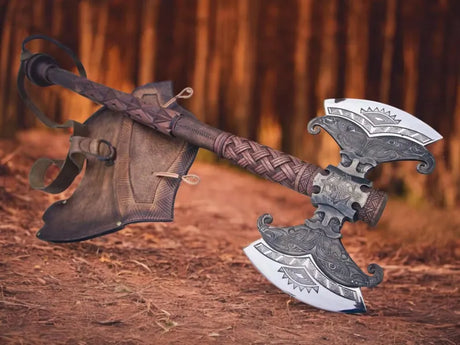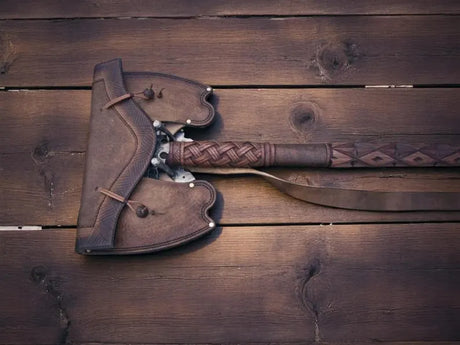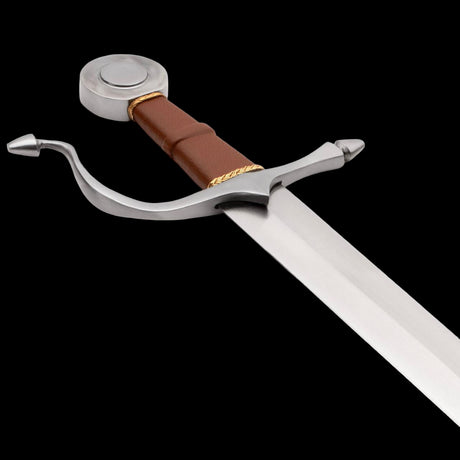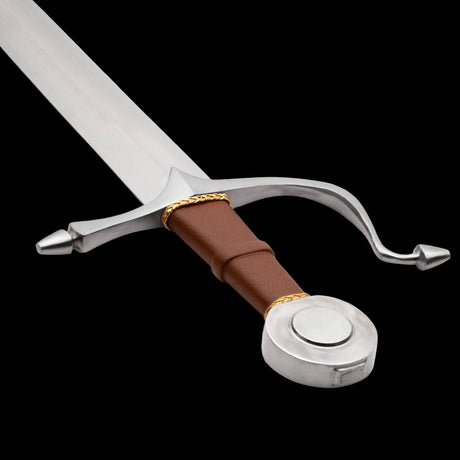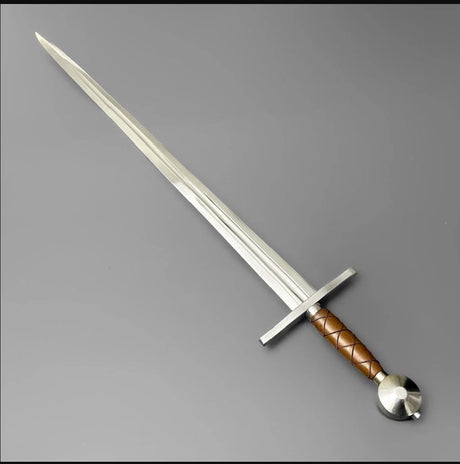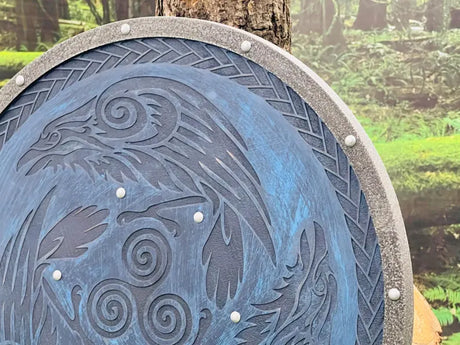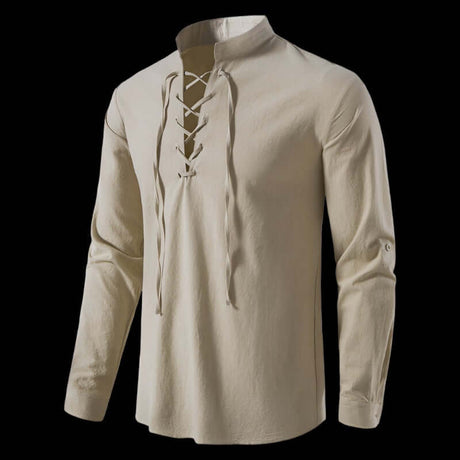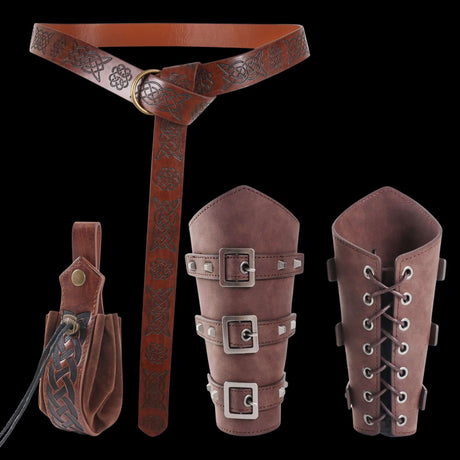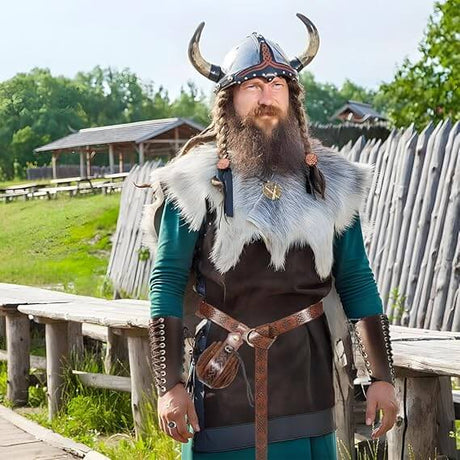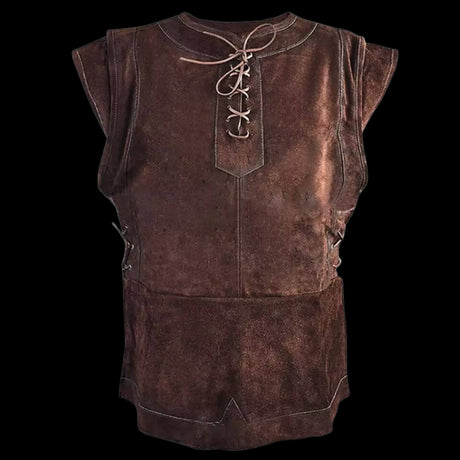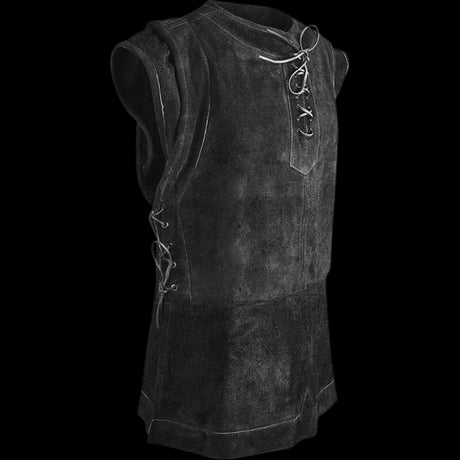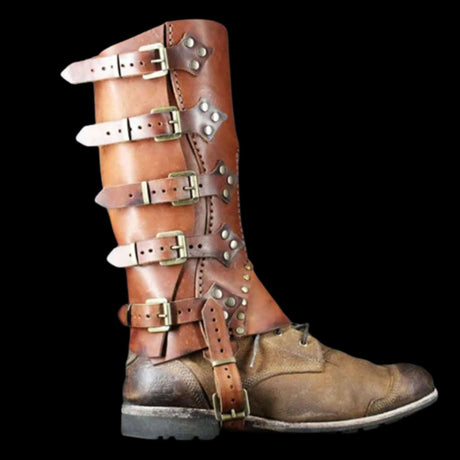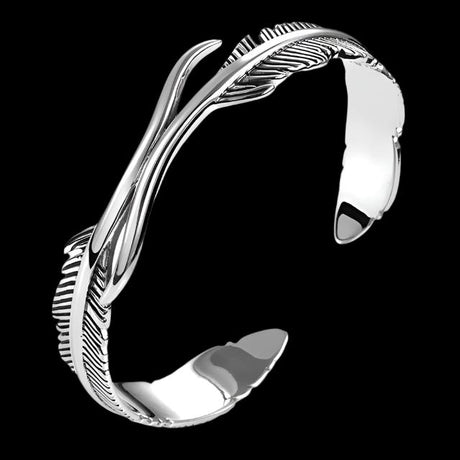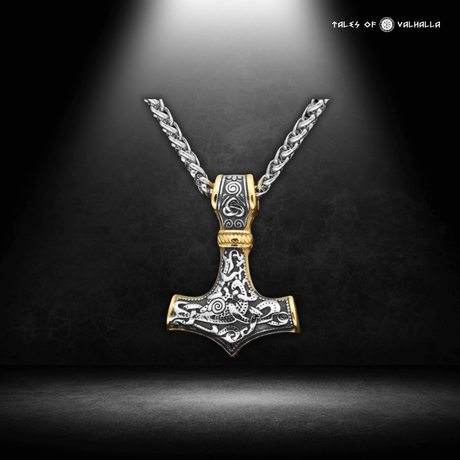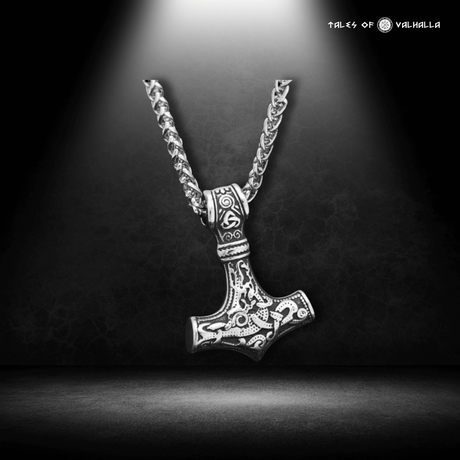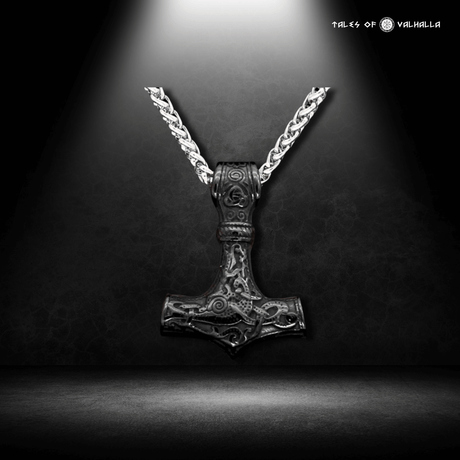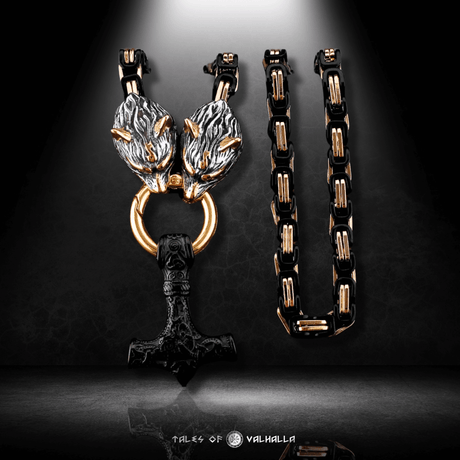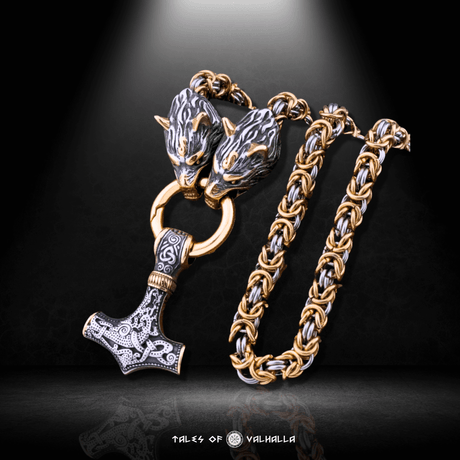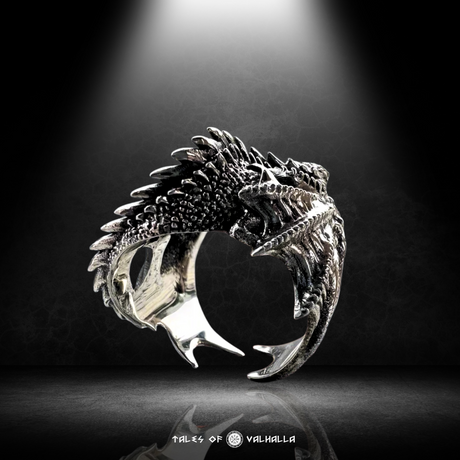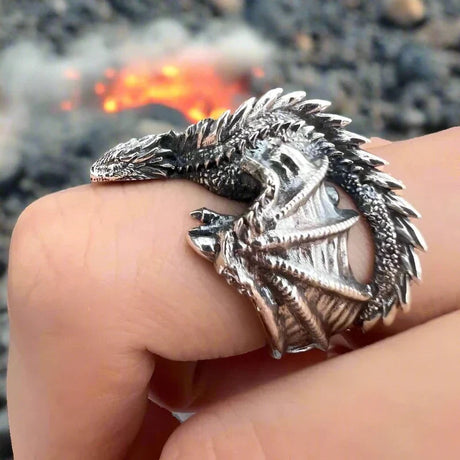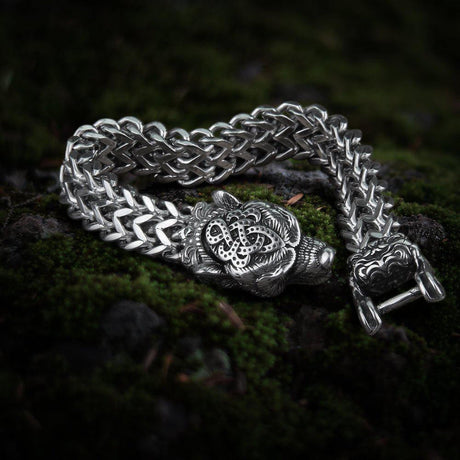If you close your eyes and picture a Viking warlord, what do you see? A towering giant with a braided beard? A berserker biting his shield in a drug-fueled rage?
Now, erase that image.
Picture instead a man who potentially couldn't walk. A brilliant tactician carried onto the battlefield on a shield, his mind sharper than any axe. This is Ivar the Boneless, the most feared Viking in history, and perhaps the most misunderstood.
History has painted him as a monster, a cripple, a sorcerer, and a king. But who was the real man beneath the terrifying nickname? Was he really "boneless," or was that a mistranslation that spiraled into a thousand-year-old myth?
Welcome to the cold, hard reality of the 9th century. We are going to dig through the mud of Repton, parse the ink of the Anglo-Saxon Chronicle, and separate the Hollywood fiction from the historical facts.
The Son of Legend: Who Was Ivar the Boneless?
To understand Ivar the Boneless, we first have to look at his family tree—a tree that is half-rooted in history and half-rooted in pure fantasy.
According to the sagas, Ivar was the son of Ragnar Lothbrok, the semi-legendary Viking hero who allegedly met his end in a pit of vipers. While historians still debate whether Ragnar was a single man or a composite of several chieftains, his sons were frighteningly real.
Ivar wasn't just a raider; he was a kingmaker and a kingdom-breaker. Unlike the Vikings who came before him—men satisfied with snatching silver from coastal monasteries—Ivar had a different ambition. He didn't just want wealth. He wanted land. He wanted conquest.
The Brothers Ragnarsson
Ivar didn't act alone. He was the head of a hydra, commanding the Great Heathen Army alongside his brothers:
- Bjorn Ironside: The celebrity warrior who raided the Mediterranean.
- Ubba: The berserker often associated with the martyrdom of Christians.
- Sigurd Snake-in-the-Eye: A man whose nickname is as puzzling as Ivar’s.
Yet, among these titans of Norse legend, it was Ivar the Boneless who commanded the most respect—and fear. The Saga of Ragnar Lothbrok describes him not as a warrior of brute strength, but as a man of "wisdom and cunning." In a culture that idolized physical perfection, Ivar’s rise to power suggests a intellect so terrifying that it rendered his physical limitations irrelevant.
The Mystery of the Name: Why "Boneless"?
This is the question that has plagued historians for centuries. Why would a culture that prided itself on physical robustness follow a leader called "Boneless"?
The theories range from the medical to the metaphorical. Let’s break down the possibilities.
1. The Medical Theory: Osteogenesis Imperfecta
The most enduring theory is that Ivar the Boneless suffered from Osteogenesis Imperfecta (brittle bone disease). This condition causes bones to break easily and can lead to malformed limbs.
- The Evidence: The sagas mention he was "borne on a shield" and that he had "gristle where his bones should be."
- The Counter-Argument: The Viking world was brutal. A physically disabled child was often left exposed to the elements to die. Could a man with brittle bones survive the rough seas of the North Sea, let alone lead an army? It seems unlikely, though his status as a prince might have protected him.

The Mystery of the Name: Why "Boneless"?
2. The "Legless" Mistranslation
Old Norse is a tricky language. The word for "bone" (bein) and "leg" are linguistically linked in Germanic languages (think of the German Bein, which means leg).
- The Theory: Perhaps he wasn't "boneless" but "legless"—meaning lame or unable to walk.
- The Twist: Some linguists suggest the Latin text might have confused Ivarr inn beinlausi (Ivar the Boneless) with Exosus (The Detested/Cruel). Over centuries, "The Cruel" became "The Boneless."
3. The Metaphorical Theory: Impotence
In the hyper-masculine society of the Vikings, having no children was a significant issue.
- The Theory: "Boneless" was a crude, derogatory slang for impotence. Ivar is not recorded as having any children, which was unusual for a Viking chieftain of his stature.
- The Reality: If this was an insult, he wore it with enough pride that no one dared say it to his face—or perhaps he adopted it to own the narrative.
4. The Flexibility Theory: Ehlers-Danlos Syndrome
A more recent medical theory suggests he had Ehlers-Danlos Syndrome, a condition that results in hyper-mobility.
-
The Visual: Imagine a warrior who could contort his body in unnatural ways, dodging sword strikes with a fluidity that seemed inhuman. To a superstitious enemy, he might look like he had no bones at all.
Comparing the Theories
| Theory | Probability | Supporting Evidence | Historical Consensus |
| Osteogenesis Imperfecta | Low to Moderate | Descriptions of him being carried on a shield; "gristle" instead of bone. | Highly debated. It's a compelling narrative but medically improbable for a warlord. |
| Impotence | Moderate | He had no known offspring; "boneless" as a euphemism. | Plausible, as nicknames were often cruel or ironic. |
| Mistranslation | High | Latin Exosus (Hated) vs. Os (Bone). | Favored by many modern linguists who doubt the "disability" narrative. |
| Hyper-Flexibility | Low | Accounts of his agility in battle. | Interesting, but lacks hard textual evidence. |
The Great Heathen Army: Strategy Over Strength
In 865 AD, the nightmare of the Anglo-Saxons became reality.
Before this date, Viking attacks were hit-and-run raids. They landed, stole, burned, and vanished. But Ivar the Boneless changed the game. He didn't come to raid; he came to stay.
He led the Great Heathen Army ( mycel hæþen here), a coalition of Viking forces that landed in East Anglia. This wasn't a chaotic mob; it was a disciplined military force.
The Capture of York (Jorvik)
Ivar's genius was evident in his choice of targets. He didn't attack the strongholds of Wessex first. He went North.
In 866 AD, on All Saints' Day—a date chosen carefully because the local leaders would be in church—Ivar and his army stormed York.
York (Eoforwic) was the capital of Northumbria, a kingdom in the middle of a civil war. Ivar used their internal division against them. He played the two rival kings, Osbert and Aella, against each other until it was too late.
By the time the Northumbrians united to retake the city, Ivar had refortified the Roman walls. The Vikings slaughtered the Northumbrian elite. This victory established York as the Viking capital of England for nearly a century, renaming it Jorvik.
The Martyrdom of King Edmund
Ivar’s cruelty is legendary. After conquering Northumbria, he turned his eyes south to East Anglia.
In 869 AD, he defeated King Edmund. Christian accounts claim Edmund refused to renounce his faith. In response, Ivar the Boneless reportedly had him tied to a tree and shot full of arrows "until he looked like a hedgehog," before beheading him.
While this account comes from later Christian hagiographies (which tend to exaggerate the villainy of pagans), it cements Ivar’s reputation as the "Anti-Christ" of the 9th century.
The Blood Eagle: Fact or Fiction?
You cannot discuss Ivar the Boneless without addressing the Blood Eagle.
According to the sagas, Ivar captured King Aella of Northumbria—the man who supposedly threw his father, Ragnar, into the snake pit. To exact the ultimate revenge, Ivar performed the Blood Eagle (blóðörn).
The Ritual
The descriptions are stomach-churning. The victim is placed prone. The ribs are severed from the spine with an axe. The ribs are then pulled open like wings, and the lungs are pulled out through the back to "flutter" as the victim dies.
The Historical Verdict
Did Ivar the Boneless actually do this?
Most modern historians, including Roberta Frank, argue: Probably not.
- Translation Error: The source material is likely a skaldic verse that said "Ivar caused the eagle to tear the back of Aella." In Old Norse poetry, eagles eating the backs of the dead is a standard metaphor for killing someone in battle. Later Christian writers, unfamiliar with the poetic metaphor, interpreted it literally as a specific method of execution.
- Anatomical Impossibility: While physically possible to perform on a corpse, keeping a human alive during the initial bone-cutting phase to see the "lungs flutter" is medically impossible due to immediate pneumothorax (collapsed lung) and shock.
The Verdict: Ivar almost certainly killed Aella, but the Blood Eagle is likely a literary myth designed to make the Vikings seem even more demonic to Christian readers.
Archaeology and Evidence: The Repton Mystery
If the sagas are unreliable, what does the ground tell us?
In the 1970s and 80s, archaeologists Martin and Birthe Biddle excavated a site at Repton in Derbyshire. Repton was the location where the Great Heathen Army wintered in 873-874 AD.
The Mass Grave
They found a mound containing the disarticulated remains of at least 264 people. These were the men of the Great Army—mostly robust males, but also some women (Viking shield-maidens or camp followers?).
Grave 511: Is this Ivar?
In the center of this chaos, they found a double grave. One skeleton, identified as Grave 511, belonged to a man who was clearly of immense status.
- The Skeleton: A male, aged 35-45.
- The Height: Approximately 6 feet (1.81m)—taller than the average man of the time, but not a giant.
- The Wounds: He died from a savage blow to the skull and a cut to the femur.
- The Items: He was buried with a sword, a Thor’s hammer amulet, and a boar’s tusk.
- The Location: He was buried in the most prominent position, near the shrine of the Mercian Saint Wystan, suggesting a symbolic dominance over the Christian kings.
The "Boneless" Connection:
The skeleton in Grave 511 had signs of trauma, but he was not "boneless" in the medical sense. However, some researchers noted a strange fusion of vertebrae and potential issues with his legs that could have caused a strange gait.
Is it him?
The timeline fits. Ivar the Boneless disappears from the historical record around 873 AD. The Annals of Ulster record the death of "Imar, King of the Norsemen of all Ireland and Britain" in 873. If Ivar and Imar are the same person (which most historians believe), Repton could be his final resting place.
However, the Annals say he died in Dublin. Did his men carry his body back to England to bury him at the site of his greatest triumph, effectively "cursing" the land of the Saxons? It is a romantic thought, and not outside the realm of Viking behavior.
Pop Culture vs. Reality
If your only knowledge of Ivar the Boneless comes from the hit TV show Vikings, you have a very specific version of him in your head.
-
The Show: Portrays him as a psychopath with brittle bone disease who crawls on the floor and murders his brothers.
-
The Reality: There is no evidence Ivar murdered his brother Sigurd. In fact, the brothers seem to have cooperated effectively for years. While he was ruthless, the "psychopath" label is a modern interpretation. He was a pragmatist. In the 9th century, mercy was a weakness that got you killed.
The show gets one thing right: his strategic brilliance. Ivar the Boneless was not a brute. He was a chess player on a battlefield of checkers.
The Legacy of the Boneless
Ivar the Boneless died over a thousand years ago, yet we are still talking about him.
Why?
Because he represents the terrifying unknown. He is the disabled warlord in a time of strength. He is the pagan destroyer who brought Christian England to its knees. He is the mystery that science can't quite solve.
Whether he was a man suffering from a painful genetic disease or a warrior with a terrifying nickname, his impact is undeniable. He paved the way for the Danelaw—the Viking rule over half of England. He shattered the Anglo-Saxon kingdoms, forcing the rise of Alfred the Great and the eventual unification of England.
Without Ivar the Boneless, there is no England as we know it.

The Legacy of the Boneless
Final Thoughts: The Man Behind the Monster
It is easy to look at the "Blood Eagle" and the burning monasteries and see only a monster. But look closer.
You see a man who, perhaps, overcame a severe physical disability to lead the fiercest warriors on earth. You see a strategist who outsmarted kings. You see a leader who commanded such loyalty that his men might have carried his corpse across the Irish Sea just to bury him in the heart of enemy territory.
Ivar the Boneless may have been a myth-maker's dream, but he was also a flesh-and-blood reality. And in the end, the facts are just as fascinating as the fiction.
Key Takeaways
-
Ivar the Boneless was a real historical figure, a leader of the Great Heathen Army that invaded England in 865 AD.
-
The nickname "Boneless" likely refers to a physical condition (Osteogenesis Imperfecta), impotence, or is a mistranslation of the Latin word for "Hated."
-
Ivar was a master tactician, responsible for the capture of York and the death of King Edmund of East Anglia.
-
The infamous Blood Eagle ritual is likely a literary invention or translation error, not a historical fact.
-
Evidence from the Repton burial site (Grave 511) offers a tantalizing, though unconfirmed, physical link to Ivar.










